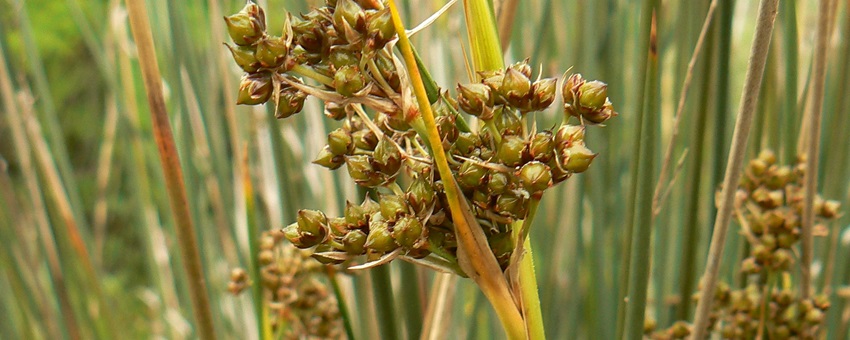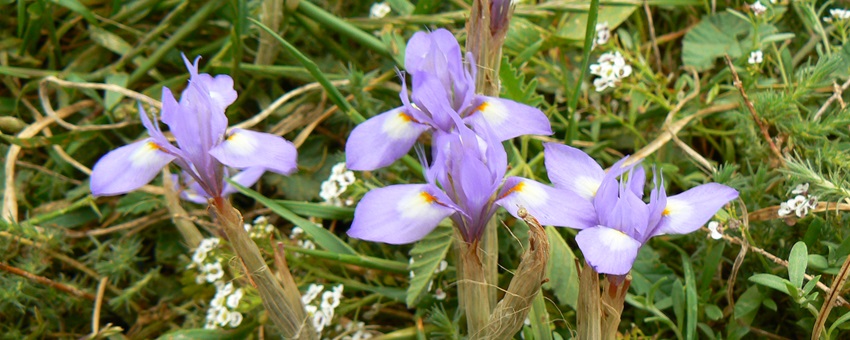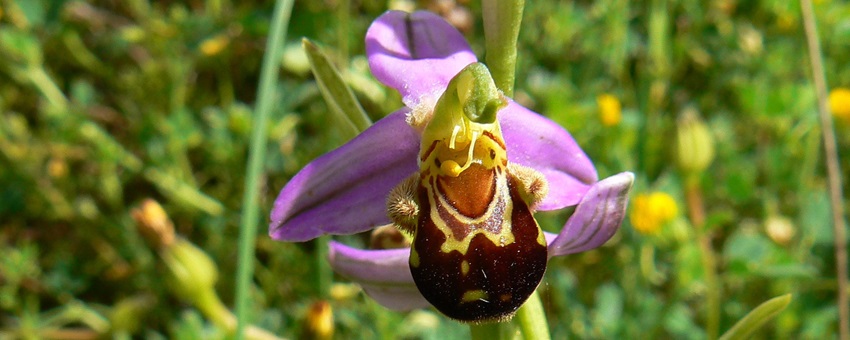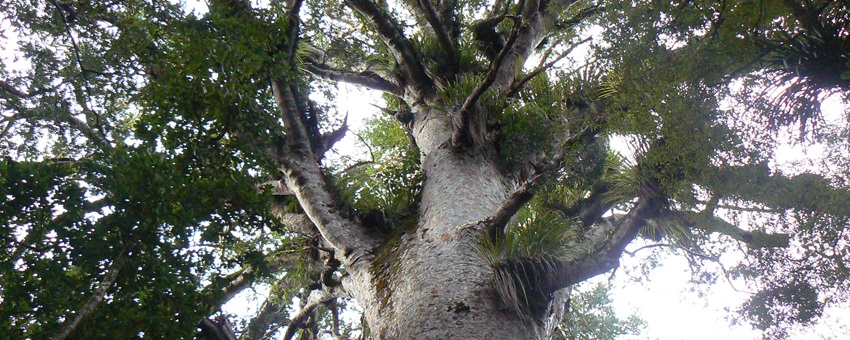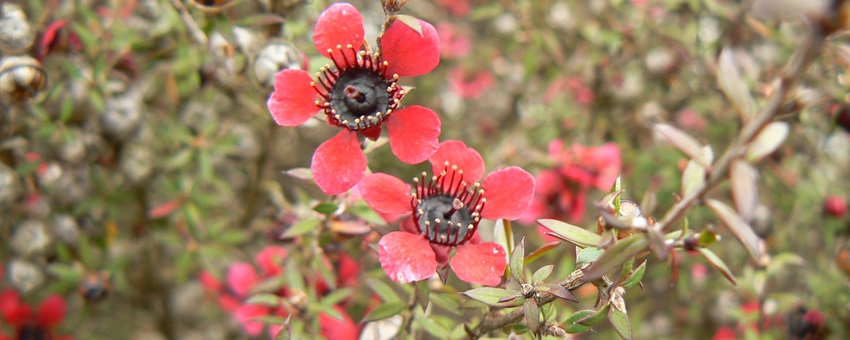Selected Abstracts
Proćków J., Záveská Drábková L. (2023): A revision of the Juncaceae with delimitation of six new genera: nomenclatural changes in Juncus. Phytotaxa 622 (1): 17-41.
Abstract: Phylogenetic relationships within the genus Juncus L. remained poorly understood for most groups, and the taxonomic division to two subgenera and ten sections was rather pragmatic. The taxonomic treatment based on the morphology of this group is complicated due to numerous repeated reductions. Continuing the molecular phylogenetic, taxonomic, and nomenclatural studies of the Juncaceae, we propose a nomenclatural revision of Juncus and propose 379 new combinations for six newly recognized genera based on combined morphological and molecular data support: Verojuncus Záveská Drábková & Proćków, Juncinella (Fourr. ex V.I.Krecz. & Gontsch.) Záveská Drábková & Proćków, Alpinojuncus Záveská Drábková & Proćków, Australojuncus Záveská Drábková & Proćków, Boreojuncus Záveská Drábková & Proćków, and Agathryon (Raf.) Záveská Drábková & Proćków.
Brožová V., Proćków J., Záveská Drábková L. (2022): Toward finally unraveling the phylogenetic relationships of the Juncaceae with respect to another cyperid family, Cyperaceae. Molecular Phylogenetics and Evolution 77: 107588.
Abstract: Juncaceae is a cosmopolitan family belonging to the cyperid clade of Poales together with Cyperaceae and Thurniaceae. These families have global economic and ethnobotanical significance and are often keystone species in wetlands around the world, with a widespread cosmopolitan distribution in temperate and arctic regions in both hemispheres. Currently, Juncaceae comprises more than 474 species in eight genera: Distichia, Juncus, Luzula, Marsippospermum, Oreojuncus, Oxychloë, Patosia and Rostkovia. The phylogeny of cyperids has not been studied before in a complex view based on most sequenced species from all three families. In this study, most sequenced regions from chloroplast (rbcL, trnL, trnL-trnF) and nuclear (ITS1-5.8S-ITS2) genomes were employed from more than a thousand species of cyperids covering all infrageneric groups from their entire distributional range. We analyzed them by maximum parsimony, maximum likelihood, and Bayesian inference to revise the phylogenetic relationships in Juncaceae and Cyperaceae. Our major results include the delimitation of the most problematic paraphyletic genus Juncus, in which six new genera are recognized and proposed to recover monophyly in this group: Juncus, Verojuncus, gen. nov., Juncinella, gen. et stat. nov., Alpinojuncus, gen. nov., Australojuncus, gen. nov., Boreojuncus, gen. nov. and Agathryon, gen. et stat. nov. For these genera, a new category, Juncus supragen. et stat. nov., was established. This new classification places most groups recognized within the formal Juncus clade into natural genera that are supported by morphological characters.
Záveská Drábková L., Pokorná E., Dobrev P.I., Kůrková J., Steinbachová L., Honys D. and Motyka V. (2021) Hormonome dynamics during microgametogenesis in different Nicotiana species. Front. Plant Sci. 12:735451. doi: 10.3389/fpls.2021.735451.
Abstract: Plant microgametogenesis involves stages leading to the progressive development of unicellular microspores into mature pollen. Despite the active and continuing interest in the study of male reproductive development, little is still known about the hormonomics at each ontogenetic stage. In this work, we characterized the profiles and dynamics of phytohormones during the process of microgametogenesis in four Nicotiana species (N. tabacum, N. alata, N. langsdorfii and N. mutabilis). Taking advantage of advanced HPLC-ESI-MS/MS, twenty to thirty endogenous hormone derivatives were identified throughout pollen ontogenesis, including cytokinins, auxins, ABA and its derivatives, jasmonates, and phenolic compounds. The spectra of endogenous phytohormones changed dynamically during tobacco pollen ontogeny, indicating their important role in pollen growth and development. The different dynamics in the accumulation of endogenous phytohormones during pollen ontogenesis between N. tabacum (section Nicotiana) and the other three species (section Alatae) reflects their different phylogenetic positions and origin within the genus Nicotiana. We demonstrated the involvement of certain phytohormone forms, such as cis-zeatin- and methylthiol-type CKs, some derivatives of abscisic acid, phenylacetic and benzoic acids, in pollen development for the first time here. Our results suggest that unequal levels of endogenous hormones and the presence of specific derivatives may be characteristic for pollen development in different phylogenetic plant groups. These results represent the currently most comprehensive study of plant hormones during the process of pollen development.
Záveská Drábková L., Honys D. anad Motyka V. (2021): Evolutionary diversification of cytokinin-specific glucosyltransferases in angiosperms and enigma of missing cis-zeatin O-glucosyltransferase gene in Brassicaceae. Scientific Reports 11, 7885. doi: 10.1038/s41598-021-87047-8
Abstract: In the complex process of homeostasis of phytohormones cytokinins (CKs), O-glucosylation catalyzed by specific O-glucosyltransferases represents one of important mechanisms of their reversible inactivation. The CK O-glucosyltransferases belong to a highly divergent and polyphyletic multigene superfamily of glycosyltransferases, of which subfamily 1 containing UDP-glycosyltransferases (UGTs) is the largest in the plant kingdom. It contains recently discovered O and P subfamilies present in higher plant species but not in Arabidopsis thaliana. The cis-zeatin O-glucosyltransferase (cisZOG) genes belong to the O subfamily encoding a stereo-specific O-glucosylation of cis-zeatin-type CKs. We studied different homologous genes, their domains and motifs, and performed a phylogenetic reconstruction to elucidate the plant evolution of the cisZOG gene. We found that the cisZOG homologs do not form a clear separate clade, indicating that diversification of the cisZOG gene took place after the diversification of the main angiosperm families, probably within genera or closely related groups. We confirmed that the gene(s) from group O is(are) not present in A. thaliana and is(are) also missing in the family Brassicaceae. However, cisZOG or its metabolites are found among Brassicaceae clade, indicating that remaining genes from other groups (UGT73—group D and UGT85—group G) are able, at least in part, to substitute the function of group O lost during evolution. This study is the first detailed evolutionary evaluation of relationships among different plant ZOGs within angiosperms.
Pokorná E., Hluska T., Galuszka P., Rashotte A. M., Dobrev P. I., Záveská Drábková L., Filipi T., Holubová K., Plíhal O., Hallmark T. H., Filepová R., Malbeck J., Novák O., Spíchal L., Brzobohatý B., Mazura P., Doležálková L., Zahajská L., Motyka V. (2021): Cytokinin N-glucosides: occurrence, metabolism and biological activities in plants. Biomolecules 11, 24. doi: 10.3390/biom11010024
Abstrakt: Cytokinins (CKs) are a class of phytohormones affecting many aspects of plant growth and development. In the complex process of CK homeostasis in plants, N-glucosylation represents one of the essential metabolic pathways. Its products, CK N7- and N9-glucosides, have been largely overlooked in the past as irreversible and inactive CK products lacking any relevant physiological impact. In this work, we report a widespread distribution of CK N-glucosides across the plant kingdom proceeding from evolutionary older to younger plants with different proportions between N7- and N9-glucosides in the total CK pool. We show dramatic changes in their profiles as well as in expression levels of the UGT76C1 and UGT76C2 genes during Arabidopsis ontogenesis. We also demonstrate specific physiological effects of CK N-glucosides in CK bioassays including their antisenescent activities, inhibitory effects on root development, and activation of the CK signaling pathway visualized by the CK-responsive YFP reporter line, TCSv2::3XVENUS. Last but not least, we present the considerable impact of CK N7- and N9-glucosides on the expression of CK-related genes in maize and their stimulatory effects on CK oxidase/dehydrogenase activity in oats. Our findings revise the apparent irreversibility and inactivity of CK N7- and N9-glucosides and indicate their involvement in CK evolution while suggesting their unique function(s) in plants.
Záveská Drábková L. and Honys D. (2017): Evolutionary history of callose synthases in terrestrial plants with emphasis on proteins involved in male gametophyte development. PLoS ONE 10.1371/journal.pone.0187331
Abstract: Callose is a plant-specific polysaccharide (β-1,3-glucan) playing an important role in angiosperms in many developmental processes and responses to biotic and abiotic stresses. Callose is synthesised at the plasma membrane of plant cells by callose synthase (CalS) and, among others, represents the main polysaccharide in the callose wall surrounding the tetrads of developing microspores and in the growing pollen tube wall. CalS proteins involvement in spore development is a plesiomorphic feature of terrestrial plants, but very little is known about their evolutionary origin and relationships amongst the members of this protein family. We performed thorough comparative analyses of callose synthase family proteins from major plant lineages to determine their evolutionary history across the plant kingdom. A total of 1211 candidate CalS sequences were identified and compared amongst diverse taxonomic groups of plants, from bryophytes to angiosperms. Phylogenetic analyses identified six main clades of CalS proteins and suggested duplications during the evolution of specialised functions. Twelve family members had previously been identified in Arabidopsis thaliana. We focused on five CalS subfamilies directly linked to pollen function and found that proteins expressed in pollen evolved twice. CalS9/10 and CalS11/12 formed well-defined clades, whereas pollen-specific CalS5 was found within subfamilies that mostly did not express in mature pollen vegetative cell, although were found in sperm cells. Expression of five out of seven mature pollen-expressed CalS genes was affected by mutations in bzip transcription factors. Only three subfamilies, CalS5, CalS10, and CalS11, however, formed monophyletic, mostly conserved clades. The pairs CalS9/CalS10, CalS11/CalS12 and CalS3 may have diverged after angiosperms diversified from lycophytes and bryophytes. Our analysis of fully sequenced plant proteins identified new evolutionary lineages of callose synthase subfamilies and has established a basis for understanding their functional evolution in terrestrial plants.
Záveská Drábková L., Pospíšková M. and Businský R. (2017): Phylogeny and infrageneric delimitation in the genus Spiraea (Rosaceae) inferred from AFLP markers and compared with morphology. Bot. J. Linn. Soc. 10.1093/botlinnean/box071
Abstract: The genus Spiraea represents deciduous shrubs with more than 100 species that are widespread in the temperate and subtropical zone of the northern hemisphere. We analysed AFLP markers with four primer pairs and scored 203 polymorphic fragments in 59 Spiraea clones, representing 32 taxa (23 species) from all four currently recognised sections (Spiraea, Calospira, Chamaedryon and Sciadantha). We also included intra- and intersectional cultural hybrids from S. sect. Spiraea, S. sect. Spiraea × Calospira and S. sect. Spiraea × Chamaedryon. A total of 161 morphological traits, alongside AFLP data, were analysed for 34 taxa by three phylogenetic methods to test the hypothesis of a non-natural concept of an infrageneric division of Spiraea in the current sections and their inadequate delimitation. Phylogenetic parsimony, Bayesian analysis and Neighbour network revealed four main groups corresponding to the PCoA analysis. The genetic relationships between significant species of the genus Spiraea and its phylogeny, as inferred from AFLP data, are not compatible with the principle of gradual inflorescence and shoot morphology used in the previously published infrageneric divisions at the level of subgenera and sections.
Do D. and Záveská Drábková L. (2017): Herbarium tale: The utility of dry specimens for DNA barcoding Juncaceae. Plant Syst. Evol. 10.1007/s00606-017-1476-x
Abstract: Phylogenetic and barcoding studies usually use fresh plant tissues as sources of DNA and have successfully amplified DNA for various loci. The use of dried samples, however, is often necessary due to the frequent inaccessibility of fresh rare plants or their parts for genetic analyses or barcoding. The difficulty in obtaining amplifiable DNA is a major restriction of the use of herbarium specimens for DNA analyses. Recent study has highlighted the crucial issues for comparing herbarium and fresh plants for barcoding. We analysed the performance of samples of the family Juncaceae from various herbarium specimens of different ages with fresh plant material in PCR reactions and the sequences of seven loci (rbcL, rpoC1, trnL-F intergenic spacer, trnL intron, and psbA-trnH from chloroplast DNA; atp1 from mitochondrial DNA; and ITS1-5.8S-ITS2 from nuclear DNA) using a combination of 28 primers. The herbarium specimens amplified well and may thus be successfully applied for both phylogenetic analyses and barcoding for the Juncaceae family. Amplifying DNA was more difficult from dried herbarium specimens than fresh samples but could be successful in most cases when appropriate internal primers were designed or methods were optimised. Using the set of universal primers recommended by the Consortium for the Barcode of Life and designing specific primers for a particular group of interest were both useful. Specimen age and amplicon length had limited detrimental effects on amplification success for most of the Juncaceae loci tested.
Žižková E., Kubeš M., Dobrev P., Přibyl P., Šimura J, Zahájská L., Záveská Drábková L., Novák O., Motyka V. (2017): Control cytokinin and auxin homeostasis in cyanobacteria and algae. Ann. Bot. 119: 151–166, doi:10.1093/aob/mcw194.
Abstract: Background and Aims - The metabolism of cytokinins (CKs) and auxins in vascular plants is relatively well understood, but data concerning their metabolic pathways in non-vascular plants are still rather rare. With the aim of filling this gap, 20 representatives of taxonomically major lineages of cyanobacteria and algae from Cyanophyceae, Xanthophyceae, Eustigmatophyceae, Porphyridiophyceae, Chlorophyceae, Ulvophyceae, Trebouxiophyceae, Zygnematophyceae and Klebsormidiophyceae were analysed for endogenous profiles of CKs and auxins and some of them were used for studies of the metabolic fate of exogenously applied radiolabelled CK, [3H]trans-zeatin (transZ) and auxin ([3H]indole-3-acetic acid (IAA)), and the dynamics of endogenous CK and auxin pools during algal growth and cell division. Methods - Quantification of phytohormone levels was performed by high-performance or ultrahigh-performance liquid chromatography–electrospray tandem mass spectrometry (HPLC-MS/MS, UHPLC-MS/MS). The dynamics of exogenously applied [3H]transZ and [3H]IAA in cell cultures were monitored by HPLC with on-line radioactivity detection. Key Results - The comprehensive screen of selected cyanobacteria and algae for endogenous CKs revealed a predominance of bioactive and phosphate CK forms while O- and N-glucosides evidently did not contribute greatly to the total CK pool. The abundance of cis-zeatin-type CKs and occurrence of CK 2-methylthio derivatives pointed to the tRNA pathway as a substantial source of CKs. The importance of the tRNA biosynthetic pathway was proved by the detection of tRNA-bound CKs during the course of Scenedesmus obliquus growth. Among auxins, free IAA and its oxidation catabolite 2-oxindole-3-acetic acid represented the prevailing endogenous forms. After treatment with [3H]IAA, IAA-aspartate and indole-3-acetyl-1-glucosyl ester were detected as major auxin metabolites. Moreover, different dynamics of endogenous CKs and auxin profiles during S. obliquus culture clearly demonstrated diverse roles of both phytohormones in algal growth and cell division. Conclusions - Our data suggest the existence and functioning of a complex network of metabolic pathways and activity control of CKs and auxins in cyanobacteria and algae that apparently differ from those in vascular plants
Záveská Drábková L., Dobrev P., Motyka V. (2015): Phytohormone profiling across the bryophytes. – PLoS ONE 10(5): e0125411. doi:10.1371/journal.pone.0125411.
Abstract: Background - Bryophytes represent a very diverse group of non-vascular plants such as mosses, liverworts and hornworts and the oldest extant lineage of land plants. Determination of endogenous phytohormone profiles in bryophytes can provide substantial information about early land plant evolution. In this study, we screened thirty bryophyte species including six liverworts and twenty-four mosses for their phytohormone profiles in order to relate the hormonome with phylogeny in the plant kingdom. Methodology - Samples belonging to nine orders (Pelliales, Jungermanniales, Porellales, Sphagnales, Tetraphidales, Polytrichales, Dicranales, Bryales, Hypnales) were collected in Central and Northern Bohemia. The phytohormone content was analysed with a high performance liquid chromatography electrospray tandem-mass spectrometry (HPLC-ESI-MS/MS). Principal Findings - As revealed for growth hormones, some common traits such as weak conjugation of both cytokinins and auxins, intensive production of cisZ-type cytokinins and strong oxidative degradation of auxins with abundance of a major primary catabolite 2-oxindole-3-acetic acid were pronounced in all bryophytes. Whereas apparent dissimilarities in growth hormones profiles between liverworts and mosses were evident, no obvious trends in stress hormone levels (abscisic acid, jasmonic acid, salicylic acid) were found with respect to the phylogeny. Conclusion - The apparent differences in conjugation and/or degradation strategies of growth hormones between liverworts and mosses might potentially show a hidden link between vascular plants and liverworts. On the other hand, the complement of stress hormones in bryophytes probably correlate rather with prevailing environmental conditions and plant survival strategy than with plant evolution.
Kirschner J., Záveská Drábková L., Štěpánek J. & Ollgard H. (2015): Towards a better understanding of the Taraxacum evolution (Compositae-Cichorieae) on the basis of nrDNA of sexually reproducing species. Pl. Syst. Evol. 301:1135-1156. DOI 10.1007/s00606-014-1139-0.
Abstract: The genus Taraxacum is characterized by prevailing complex multiple hybridity, frequent polyploidy and widespread agamospermous reproduction, which makes the phylogenetic analysis difficult. On the basis of the previous analysis of the variation of nrDNA in Taraxacum taxa with different ploidy levels and modes of reproduction, to mitigate consequences of the reticulate complexity of the genus, a phylogenetic study of 52 samples of sexually reproducing dandelions of 26 sections (and another 13 agamospermous representatives of other sections known to include sexuals) was carried out. Both sexual and agamospermous samples were analysed using maximum parsimony and neighbour network. Exclusively sexual dandelions were analysed using the same approaches. In spite of the general agreement among various types of analyses, there is a limited overall congruence between results of nrDNA analyses and the established taxonomic system of the genus Taraxacum. The analyses shed light on the relationships among the most primitive groups. A stable clade is formed by representatives of the sections Primigenia, Orientalia, Sonchidium, Piesis and T. cylleneum. Another case of stable relationships is that of the members of the sect. Dioszegia. Relationships between the sects. Erythrosperma and Erythrocarpa were supported, and the relatedness of the members of sect. Australasica was confirmed. Rather unexpectedly, the agamospermous samples of the sect. Oligantha (T. minutilobum) are shown to be closely related with the sect. Macrocornuta. The latter section is generally considered to be close to sect. Ceratoidea (T. koksaghyz) on morphological grounds but this presumption is not corroborated by the results of nrDNA analyses. Analyses of 72 samples of sexual dandelions were also performed using the trnL–trnF region of the chloroplast DNA. The maximum parsimony analysis of this region reveals intraspecific variation in a number of ancestral diploid sexual species, all present in the two main branches of the cladogram. This phenomenon is attributed to the ancient gene flow and possibly to the persistence of ancestral cpDNA polymorphism. The strict consensus cpDNA tree information content and interpretability is quite low. The maximum parsimony analysis of combined nrDNA and cpDNA data sets was also performed with expectably low interpretability of the results.
Záveský L., Jandáková E., Turyna R., Langmeierová L., Weinberger V., Záveská Drábková L., Hůlková M., Hořínek A., Dušková D., Feyereisl J., Minář L., Kohoutová M. (2015): Evaluation of cell-free urine microRNAs expression for the use in diagnosis of ovarian and endometrial cancers. A pilot study. Pathology & Oncology Research 4: 21(4):1027-1035. DOI: 10.1007/s12253-015-9914-y.
Abstract: Among gynaecological cancers, epithelial ovarian cancers are the most deadly cancers while endometrial cancers are the most common diseases. Efforts to establish relevant novel diagnostic, screening and prognostic markers are aimed to help reduce the high level of mortality, chemoresistance and recurrence, particularly in ovarian cancer. MicroRNAs, the class of post-transcriptional regulators, have emerged as the promising diagnostic and prognostic markers associated with various diseased states recently. Urine has been shown as the source of microRNAs several years ago; however, there has been lack of information on urine microRNA expression in ovarian and endometrial cancers till now. In this pilot study, we examined the expression of candidate cell-free urine microRNAs in ovarian cancer and endometrial cancer patients using quantitative real-time PCR. We compared the expression between pre- and post-surgery ovarian cancer samples, and between patients with ovarian and endometrial cancers and healthy controls, within three types of experiments. These experiments evaluated three different isolation methods of urine RNA, representing two supernatant and one exosome fractions of extracellular microRNA. In ovarian cancer, we found miR-92a significantly up-regulated, and miR-106b significantly down-regulated in comparison with control samples. In endometrial cancer, only miR-106b was found down-regulated significantly compared to control samples. Using exosome RNA, no significant de-regulations in microRNAs expression could be found in either of the cancers investigated. We propose that more research should now focus on confirming the diagnostic potential of urine microRNAs in gynaecological cancers using more clinical samples and large-scale expression profiling methods.
Záveská Drábková L. and Kirschner J. (2013): Oreojuncus, a new genus in the Juncaceae. Preslia 85: 483-503.
Abstract: Juncus trifidus and J. monanthos, two species traditionally included in the section Steirochloa, the Juncaceae, are shown to be substantially different morphologically from the other members of this section. Their relationships with the other groups recognized in the family, using DNA data sets of selected regions of plastome, chondriome and the nrDNA, were examined by means of phylogenetic analyses of the combined data set of all these DNA regions. The resultant cladograms place J. trifidus and J. monanthos at a very basal position in the Juncaceae. Both the morphology and the phylogenetic analysis support the exclusion of these two species from Juncus as a separate genus. The genus is described under the name Oreojuncus Záveská Drábková et Kirschner. A detailed comparison with the other genera of the Juncaceae, and an identification key to the Juncaceae genera are provided.
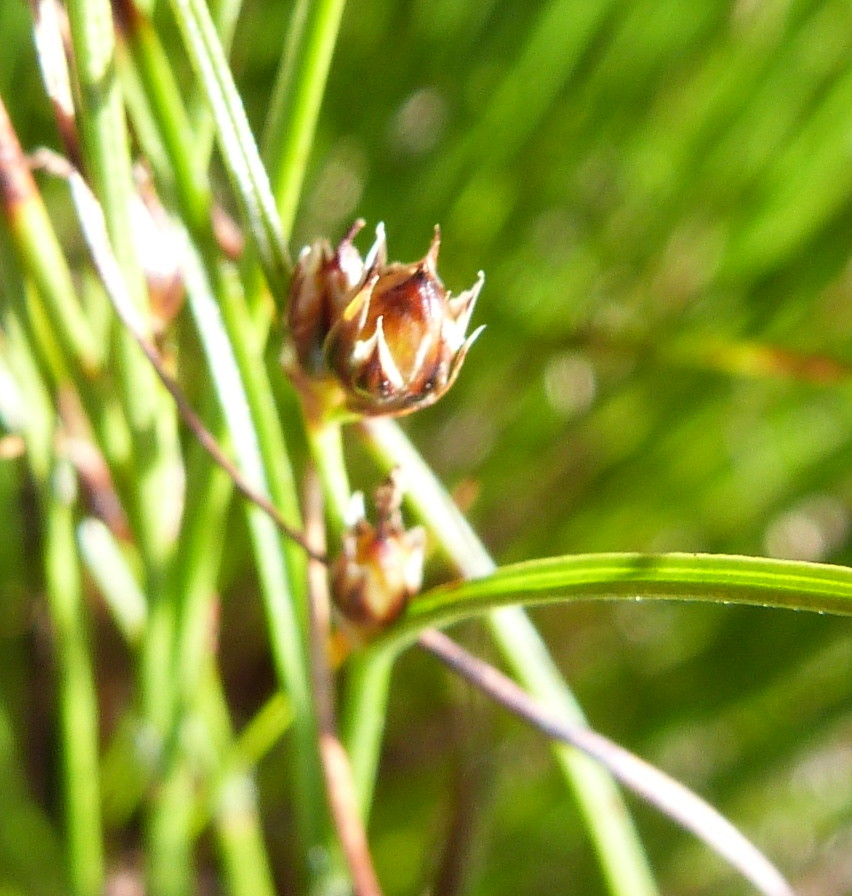
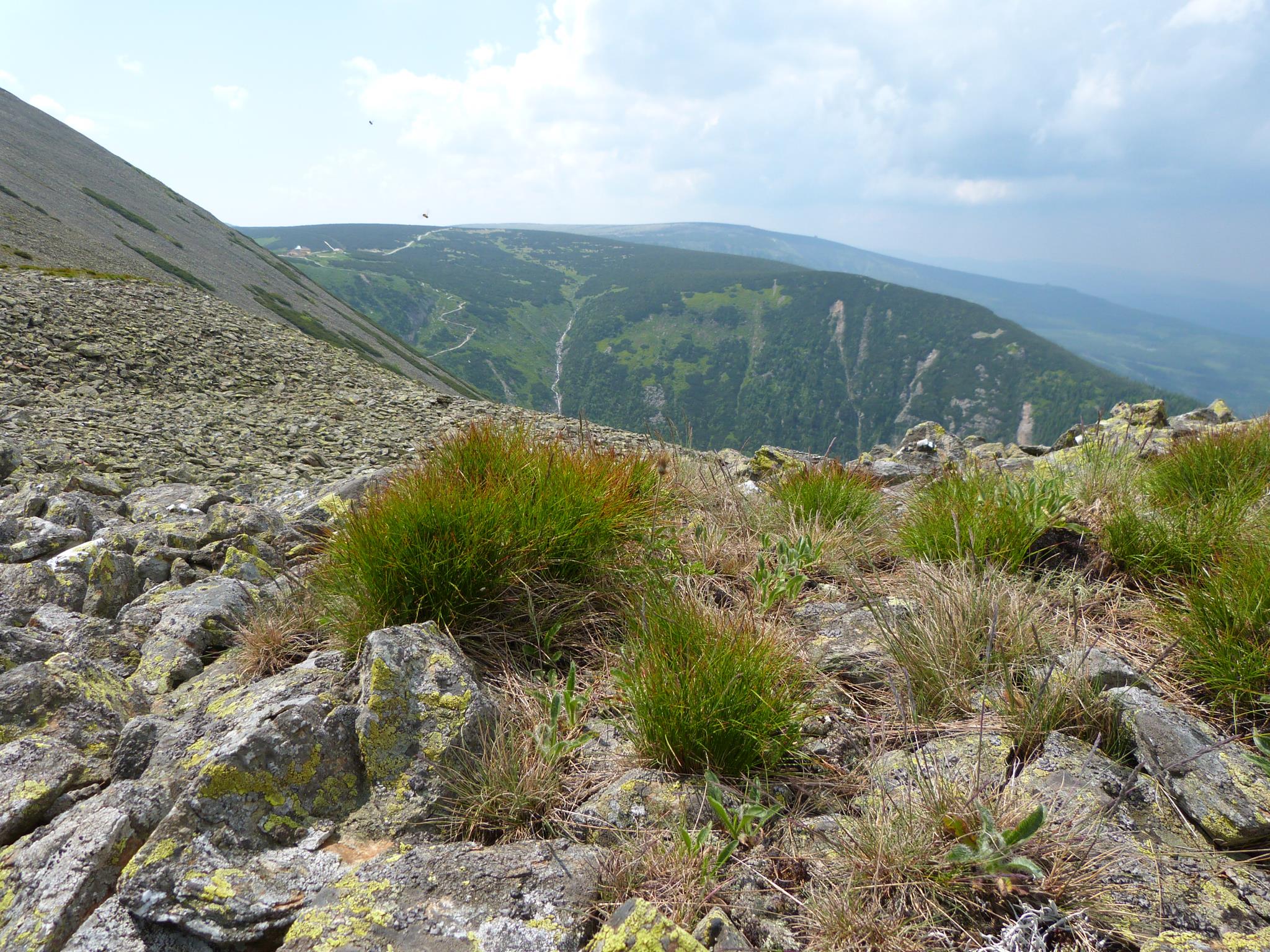
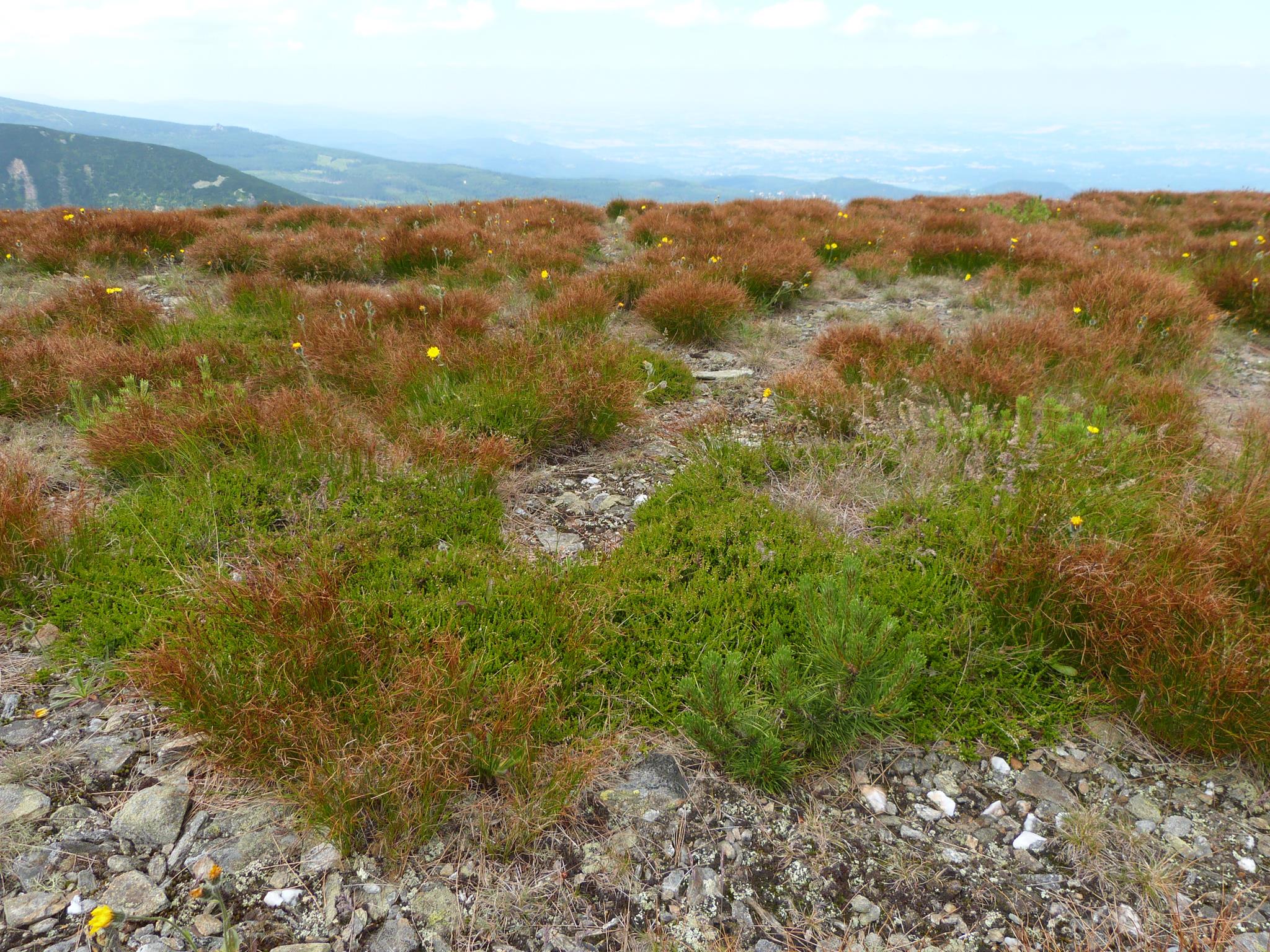
Záveská Drábková L. (2013): A Survey of Karyological Phenomena in the Juncaceae with Emphasis on Chromosome Number Variation and Evolution. Botanical Review 79/3: 401-446, DOI 10.1007/s12229-013-9127-6.
Abstract: The order Poales is well known for the presence of holocentric chromosomes, agmatoploidy, symploidy, polyploidy and high variation in chromosome numbers among and within species and genera. The second largest family of this order, Cyperaceae, is very well characterized both karyologicaly and cytologicaly. On the other hand, a smaller family Juncaceae is not so widely investigated from this point of view. The currently known chromosome numbers of the species of all eight genera of the Juncaceae are presented and variation among them is explored. Distribution of diploids, agmatoploids, agmatopolyploids, polyploids, symploids and aneuploids in the family is discussed in the phylogenetic context. Luzula is the best explored group followed by Juncus and Oreojuncus. However, only very little is known for five other Southern hemisphere genera. Fifty-eight percent of taxa from the Juncaceae are still completely unknown. Three different series of chromosome counts have been found in the Juncaceae, one for Luzula (x=6), the second for Oreojuncus (x=15) and the third for Juncus (x=20) with many agmatoploid and aneuploid derivates. This outline summarizes current knowledge in chromosome count variation and karyological research in the family Juncaceae.
Bozek M., Leitch I.J., Leitch A.R., Záveská Drábková L. & Kuta E. (2012): Chromosome and Genome size Variation in Luzula DC. Bot. J. Linn. Soc. 170/4: 529-541.
Abstract: The present study examines chromosome and genome size evolution in Luzula (woodrush; Juncaceae), a monocot genus with holocentric chromosomes. Detailed karyotypes and genome size estimates were obtained for seven Luzula spp., and these were combined with additional data from the literature to enable a comprehensive cytological analysis of the genus. So that the direction of karyotype and genome size changes could be determined, the cytological data were superimposed onto a phylogenetic tree based on the trnL-F and internal transcribed spacer (ITS) DNA regions. Overall, Luzula shows considerable cytological variation both in terms of chromosome number (2n = 6–66) and genome size (15-fold variation; 2C = 0.56–8.51 pg; 547.7–8322.8 Mb). In addition, there is considerable diversity in the genomic mechanisms responsible, with the range of karyotypes arising via agmatoploidy (chromosome fission), symploidy (chromosome fusion) and/or polyploidy accompanied, in some cases, by the amplification or elimination of DNA. Viewed in an evolutionary framework, no broad trend in karyotype or genome evolution was apparent across the genus; instead, different mechanisms of karyotype evolution appear to be operating in different clades. It is clear that Luzula exhibits considerable genomic flexibility and tolerance to large, genome-scale changes.
Rooks F., Jarolímová V., Záveská Drábková L. & Kirschner J. (2011): The elusive Juncus minutulus: a failure to separate tetra- and hexaploid individuals of the Juncus bufonius complex in a morphometric comparison of cytometrically defined groups. - Preslia 83: 565–589.
Abstract: Screening of nuclear genome size was carried out on ca 2400 plants from over 120 mainly Central- European localities of the Juncus bufonius group. Besides the diploid level, corresponding to known diploid species (in this case J. ranarius, J. hybridus and J. sorrentini), two polyploid cytotypes were detected, conforming with the tetraploid and hexaploid levels treated by some authors as separate species: J. minutulus and J. bufonius s. str. The relationship between nuclear DNA content and the number of chromosomes was verified by chromosome counting. Polyploidy, as opposed to agmatoploidy can, therefore, account for the karyological variation. The 2C values of diploid, tetraploid and hexaploid individuals were ca 0.65, 1.18±2.8% and 1.84±1.6% pg 2C DNA, respectively. No other cytotype or statistically significant variation in nuclear genome size was found. To asses the utility of hitherto published morphological characters distinguishing J. minutulus from J. bufonius s. str., measurements of seven floral and three vegetative quantitative characters were obtained (no less than 10 measurements per flower, 30 per plant) for 358 mature plants of known ploidy level from 47 localities. Diverse ordination and clustering techniques did not indicate the presence of any grouping in the dataset. Canonical discriminant analysis and stepwise variable selection indicated that inner tepal length followed by mean capsule width and mean capsule length were the most useful characters for identifying the two ploidy levels; however, the estimated 10-fold cross-validation error rate of a simple k nearest neighbour classification analysis was 0.45. Other analyses corroborated this result. No new morphological character that would allow successful separation of tetraploids from hexaploids was discovered. This provides independent support for the opinion of some previous authors that J. bufonius L. is best treated as a single variable species comprising two cytotypes that are inseparable using hitherto suggested diagnostic characters until convincing proof to the contrary is available.
Keywords: chromosomes, discriminant analysis, flow cytometry, Juncus bufonius, J. minutulus, morphometrics, polyploidy
Záveská Drábková L. & Vlček Č. (2010): Molecular phylogeny of the genus Luzula DC. (Juncaceae, Monocotyledones) based on plastome and nuclear ribosomal regions: A case of incongruence, incomplete lineage sorting and hybridisation. - Mol. Phylogenet. Evol. 57/2: 536-551.
Abstract: The genus Luzula consists of 115 species distributed throughout the world. Luzula is monophyletic, but species relationships within the genus are difficult to determine primarily due to the similar morphology even within geographically remote taxa (especially within the section Luzula). The plastome trnL intron, trnL-F intergenic spacer and the nuclear ribosomal ITS1-5.8S-ITS2 regions were analysed using maximum parsimony and maximum likelihood reconstruction in 93 species of Luzula. The incongruent phylogenetic signals obtained from the chloroplast and the nuclear genomes point to incomplete lineage sorting as well as recent hybridisation in this group. Although tree-building analyses revealed several well-supported lineages, the outcomes for many groups were ambiguous. In the total evidence tree, Luzula species were grouped within six main clades (1. subgenus Marlenia, 2. subgenus Pterodes except for L. pilosa, 3. sections Anthelaea and Nodulosae, 4. sections Diprophyllatae and Thyrsanochlamydeae, 5. section Alpinae except for a few species and 6. section Luzula). The subgenus Marlenia occupies the early derived lineage within the genus Luzula. The traditionally accepted subgenera Pterodes and Luzula (and its sections) appear to be non-monophyletic. A statistical parsimony network approach showed that ancient haplotypes and ribotypes co-occur with their descendants in Luzula. Furthermore, many haplotypes are shared among different species. Within the Luzula section Luzula, both recent hybridisation and incomplete lineage sorting of ancestral polymorphisms may represent potential sources of the incongruence between chloroplast and nuclear data.
Key words: Luzula, Juncaceae, Phylogeny, trnL-F intergenic spacer, trnL intron, ITS1-5.8S-ITS2 plastome, Nuclear ribosomal genes
Záveská Drábková L. & Vlček Č. (2009): Mitochondrial DNA variation within Juncaceae: Comparison of impact of organelles regions on phylogeny. - Pl. Syst. Evol. 278: 169-186.
Abstract: A phylogenetic analysis of the Juncaceae was conducted to assess relationships within the genera Juncus, Luzula and five other small South American genera (Distichia, Marsippospermum, Oxychloë, Patosia and Rostkovia). We examined parallel datasets from organelles (mtDNA: atp1 gene, cpDNA: trnL intron, trnL-F intergenic spacer, rbcL gene) with respect to qualities relevant to the phylogenetic analysis of the Juncaceae. The main aim of our work was to produce a robust phylogeny of the Juncaceae validated by data from both organelles. Our data confirm the monophyly of the genus Luzula, but do not provide support for monophyly of the genus Juncus. The majority of taxa clustered within two subgenera, Agathryon and Juncus, morphologically supported by the presence or absence of bracteoles and cymose or racemose inflorescences respectively. The subgenus Juncus is divided into two separate clades, the first closely related to the subgenus Agathryon and the second in the most basal part of the tree. Moreover, small South American genera clustered together with Juncus sect. Graminifolii and also with Juncus sect. Juncus. In fact, comparison of results from separate analyses of mitochondrial and plastome genes demonstrates that the general resolution of main topology of the atp1 tree is similar to the separate rbcL tree; the genus Juncus is better resolved, but the genus Luzula remains mainly polytomic.
Keywords: mtDNA, atp1, cpDNA, Juncaceae, Luzula, Juncus, molecular phylogeny
Záveská Drábková L., Kirschner J., Štěpánek J., Záveský L. & Vlček Č. (2009): Analysis of nrDNA polymorphism in closely related diploid sexual, tetraploid sexual and polyploid agamospermous species. - Pl. Syst. Evol. 278: 67-85.
Abstract: Nuclear sequences of ITS1-5.8S-ITS2 region of rDNA may be an important source of phylogenetically informative data provided that nrDNA is cloned and the character of sequence variation of clones is properly analysed. nrDNA of selected Taraxacum sections was studied to show sequence variation differences among diploid sexual, tetraploid sexual and polyploidy agamospermous species. We examined nucleotide characteristics, substitution pattern, secondary structure, and the phylogenetic utility of ITS1-5.8S-ITS2 from 301 clones of 32 species representing 11 sections. The most divergent sequences of ITS1&2 differed by 17.1 % and in 5.8S only by 3.7 %. The ITS1-5.8S-ITS2 characteristics, integrity and also stability of secondary structures confirmed that pseudogenes are not responsible for the above variation. The within-individual polymorphism of clones implies that the concerted evolution of ITS cistron of agamospermous polyploid Taraxacum is remarkably suppressed. Sequences of ITS clones proved to be a useful tool for mapping pathways of complex reticulation (polyploid hybridity) in agamospermous Taraxacum.
Keywords: Taraxacum, dandelion, agamospermy, reticulation, nrDNA polymorphism, ITS1-5.8S-ITS2, cloning
Drábková L. & Vlček Č. (2007): The phylogenetic position of Oxychloë (Juncaceae): evidence from one nuclear, three plastid regions and morphology. - Taxon 56/1: 95-102.
Abstract: Use of molecular data for phylogenetic studies in Juncaceae/Cyperaceae beginning in 1993 has resulted in an uncertain taxonomic position of the Andean Oxychloë Phil. Based on rbcL data Duvall & al. (1993), Plunkett & al. (1995) and Muasya (1998, 2000) suggested that the Andean Oxychloë was placed inside Cyperaceae or as their sister group, however, Oxychloë has many typically juncaceous morphological features (e.g., spiro- or ortostichous leaves, many ovules, prominent tepals) that differentiate it from Cyperaceae. The paper reveals relationships among the genera Oxychloë, Patosia, Distichia, Marsippospermum and Rostkovia based on both morphological and molecular data (cpDNA: rbcL, trnL intron and trnL-trnF intergenic spacer, matK and nrDNA: ITS1 & 2). Oxychloë is undoubtedly a member of Juncaceae based on both sources of data. Oxychloë andina and O. bisexualis are closely related and form a sister group to O. haumaniana and O. castellanosii based on strict consensus of molecular data, but not on morphological data by which their position remain unresolved. Close relationships of Patosia with Distichia and Rostkovia with Marsippospermum were confirmed.
Key words: ITS1, ITS2, matK, morphology, Oxychloë, phylogeny, rbcL, sequence databases, total evidence, trnL-F
Drábková L., Kirschner J. & Vlček Č. (2006): Phylogenetic relationships within Luzula DC. and Juncus L. (Juncaceae): A comparison of phylogenetic signals of trnL-trnF intergenic spacer, trnL intron and rbcL plastome sequence data. – Cladistics 22/2:132-143.
Abstract: Juncus and Luzula are the largest, almost cosmopolitan, genera in the Juncaceae. Relationships within Juncus and Luzula and among other genera of Juncaceae (Distichia, Marsippospermum, Oxychloë, Patosia, and Rostkovia) remain incompletely resolved. RbcL sequence data resolved a part of the supraspecific phylogeny, but many clades remain polytomic. For this reason, non-coding cpDNA regions, trnL intron and trnL-trnF intergenic spacer, were sequenced. We intended to create hypotheses of relationships within Juncaceae and test classification of the sections, but a primary goal to this study was to assess relationships within Juncus and Luzula and test monophyly of groups recognized from rbcL data (especially the monophyly of genus Luzula and the Southern Hemisphere Clade (SHC)). Furthermore, we tested the influence of different rooting and ingroup composition on the tree topology. The parsimony analyses revealed several well-supported lineages. Traditionally distinguished genus Luzula is monophyletic and Juncus is non-monophyletic. Two subgenera of Luzula (Pterodes and Luzula) are non-monophyletic, while subg. Marlenia forms a sister group to the whole Luzula clade (trnL-F data set). Within Juncus, both subgenus Juncus and subgenus Agathryon are non-monophyletic. SHC is clustered not only with the South African J. lomatophylus and J. capensis, but also together with members of section Juncus, Caespitosi and Graminifolii. These sections form a well-separated sister group to the SHC. Within the genera Juncus and Luzula, monophyly is demonstrated for a number of groups (e.g., Juncus section Stygiopsis, Luzula section Luzula) but questioned for others (e.g., Juncus section Graminifolii). The unusual, separate positioning of Juncus trifidus and J. monanthos were clarified by trnL-trnF sequence data, but vary within the tree topology depending on outgroup selection and also due to LBA phenomenon.
Key words: Juncaceae, Juncus, Luzula, rbcL, trnL intron, trnL-F intergenic spacer, phylogeny
Štech M. & Drábková L. (2005): Morphometric and RAPD study of Melampyrum sylvaticum group in the Sudeten, Alpen and Carpathian mountains. - Folia Geobot. 40: 177-195.
Abstract: The Melampyrum sylvaticum agg. is a heterogeneous group at the inter- and infraspecific level. Several more or less independent trends in the variation of Melampyrum sylvaticum s.l. are conspicuous. Wide range of morphological characters was examined on specimens collected for this study. The corolla size, the corolla colour and the anther length are considered most important morphological characters at the interspecific taxonomic level. The morphological and molecular variation of the Melampyrum sylvaticum complex in the Sudeten, the Alps and the Carpathians is analysed. The morphometric study in European populations of Melampyrum sylvaticum s.l. partly clarified the pattern of the variation of selected characters in this region. The RAPD analysis manifests very similar trend of the population grouping. The combined analysis of morphological and molecular data gives the most explicit results. Central European populations of M. sylvaticum s.l. form two distinctive groups. First one is an exclusive type of the Alps and of the Hercynian Mountains (without the Sudeten). The second group has its centre of its distribution in the east part of the Carpathians. This type was described as Melampyrum herbichii from the present Ukrainian Carpathians and was regarded to be endemic to the East and South Carpathians. Many populations are morphologically intermediate. The bract shape seems to be important for the discrimination between both groups of populations besides the flower characters and a modest ecological differentiation. The Eastern Carpathian Melampyrum saxosum with white corolla is very close to M. herbichii based on the studied morphological characters. The present paper represents the first part of a study of the phylogeny and the phylogeography of the Melampyrum sylvaticum group.
Key words: Melampyrum herbichii, Melampyrum saxosum,genetic diversity, Central Europe
Kristiansen K., Cilieborg M., Drábková L., Jørgensen T., Petersen G. & Seberg O. (2005): DNA taxonomy - the riddle of Oxychloë. - Syst. Bot. 30(2): 284-289.
Abstract: Recently, advocates of DNA taxonomy have complained that there is inadequate control of the taxonomy in databases such as GenBank. This is correct, but the uncertainty may be extended to the sequences themselves. The present study shows that as long as vouchers are available neither problem is fatal, but if no voucher exists, bad sequences and bad taxonomy may be forever linked. Previous phylogenetic analyses of rbcL sequences have indicated that the small, south hemisphere, genus Oxychloe (Juncaceae) surprisingly either is embedded within or is a sister group to the Cyperaceae. This is not in accordance with traditional or current morphological data. By studying five new accessions, representing four species of Oxychloe, and re-examining the two vouchers of O. andina that were used in previous phylogenies, it has been possible to show that these two sequences are erroneous. One is a chimeric sequence and the other is most likely "a contaminant".
Key words: rbcL sequence data, evolution, Juncaceae, supertrees, phylogeny, life
Kirschner J., Rejdali M. & Drábková L. (2004): A new Juncus of the sect. Tenageia from Marocco. – Preslia76: 371-376.
Abstract: A new annual species, Juncus maroccanus, of the section Tenageia, closely allied to Juncus foliosus Desf., is described from N Morocco. It differs from the latter in having smooth, glossy seeds, capsule shorter than perianth and shortly mucronate. The new species is known from a macrolocality in the Ksar-el-Kebir region, where it grows in non-saline sandy seepage sites. Another, much older specimen was collected in 1835 by W. Schimper in the Sinai Peninsula, Egypt. Syntype specimens of Juncus rhiphaenus Pau et Font Quer were examined and found to he conspecific with Juncus foliosus.
Key words: annual species, Juncaceae, Morocco, taxonomy
Drábková L., Kirschner J., Vlček Č. & Pačes, V. (2004): TrnL-trnF intergenic spacer and trnL intron define clades within Luzula and Juncus (Juncaceae).- J. Mol. Evol. 59(1):1-10.
Abstract: 727-1097 bp of the trnL intron and trnL-trnF intergenic spacer of the chloroplast DNA of 55 Juncaceae taxa (Juncus, Luzula, Rostkovia and Oxychloë) were sequenced. Seventeen structural mutations (13 indels marked A to M, 3 parts of trnF pseudogene, and insertion “o” within a pseudogene) within the chloroplast trnL-trnF region were examined as possible indicators for phylogenetic relationships in Juncaceae. Juncus trifidus (sect. Steirochloa) was clearly separated from the other taxa by two large (> 80 bp) indels. The ´Southern Hemisphere Clade´ was strongly supported by a unique insertion (334 bp) in the trnL intron. The monophyly of Luzula was supported by three small (< 10 bp) indels in the trnL-F spacer. They were found in all 22 examined members that represent the taxonomic and geographical diversity of the genus Luzula. A tandemly duplicated tRNA pseudogene was found in the Juncus subg. Juncus species and is supported by four small unique indels too. The acceptor stem and D-domain encoding regions are separated by a unique 8 bp insertion. The T-domain and acceptor stem encoding regions were not found in the pseudogene repeats. Only the Juncus sections Ozophyllum and Iridifolii contain 5´ acceptor stem, D-domain and anticodon domain of the tRNAF encoding DNA. The structural mutations in the trnL intron and the trnL-trnF intergenic spacer are useful for phylogenetic reconstruction in the Juncaceae.
Key words: Luzula, Juncus, Juncaceae, trnL-trnF, indels, pseudogene
Drábková L. & Kirschner J. (2004): Juncus uruguensis Griseb. - a member of section Juncotypus (Juncaceae, subg. Agathryon).- Nord. J. Bot. 22: 687-691.
Abstract: Anatomy and morphology of Juncus uruguensis Griseb. were studied in order to determine the sectional position of the species. Leaf anatomy, a decisive criterion for sectional classification in the subg. Agathryon, shows that the species should be placed in the sect. Juncotypus, not in the sect. Steirochloa.
Key words: Juncus uruguensis, Juncaceae, anatomy
Drábková L., Kirschner J., Seberg, O., Petersen, G. & Vlček Č. (2003): Phylogeny of the Juncaceae based onrbcL sequences, with special emphasis on Luzula DC. and Juncus L.- Pl. Syst. Evol. 240: 133-147.
Abstract: Cladistic analysis of rbcL nucleotide sequences was applied to 59 taxa representing most subgenera and sections of Luzula and Juncus, chosen to reflect morphological and geographical diversity of both genera. Additionally, representatives of all other genera of the Juncaceae and two taxa from the Cyperaceae were included. Phylogenetic trees were constructed using parsimony with Prionium serratum as outgroup. The dataset has 206 parsimony informative sites. The analysis yielded more than 332,400 equally parsimonious trees (length 620, CI=0.47, RI=0.82). A jackknife analysis revealed several well-supported clades. Luzula is monophyletic and Juncus is non-monophyletic. Each of the generally accepted subgenera of Juncus, subg. Juncus and subg. Agathryon, form a clade, but their circumscription differs from the traditional views. The subgenera recognized in Luzula remain mainly unresolved. A well-supported clade is represented by an assemblage of representatives of five genera and species distributed in the Southern Hemisphere: Juncus capensis and J. lomatophyllus (both from section Graminifolii), Rostkovia, Distichia, Marsippospermum, and Patosia.
Key words: monocotyledons, Juncaceae, Luzula, Juncus, phylogeny, sequencing, rbcL
Drábková L., Kirschner J. & Vlček Č. (2002): Comparison of seven DNA extraction and amplification protocols in historical herbarium specimens of Juncaceae - Pl. Mol. Biol. Rep. Vol. 20/2: 161-175.
Abstract: Seven DNA extraction protocols were used to obtain DNA from herbarium specimens of Juncus and Luzula (Juncaceae) of various age. DNA of historical samples is difficult to extract, and the extracts are seldom of good quality. The quality of DNA obtained was estimated by measuring A260/280 absorbance ratio by spectrophotometer. The yield of total DNA was measured by fluorometer. The results indicate superiority of the combination of mixer mill grinding and Dneasy Plant Kit. Another extraction protocol (grinding with mortar and pestle using liquid nitrogen) yielded DNA from many samples. Modified CTAB extraction with a long time of precipitation usually provides good amounts of DNA. Other protocols did not give satisfactory results.
Key words: cpDNA, DNA extraction, herbarium specimens, Juncaceae, Juncus, Luzula, PCR amplification

